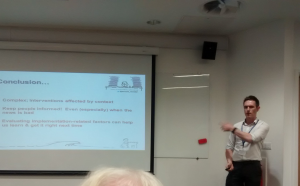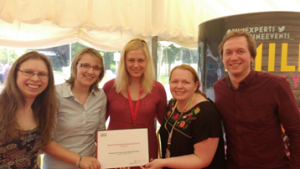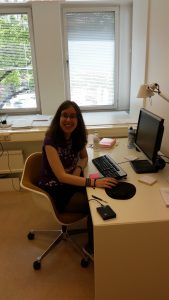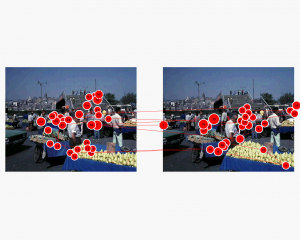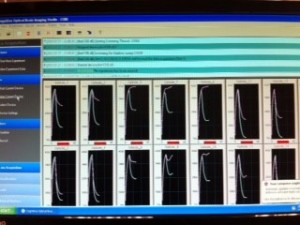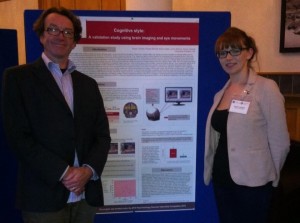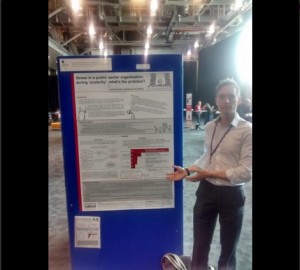By Alexandra Horsman
The typical view of a Post-Traumatic Stress Disorder (PTSD) sufferer is, without doubt, a veteran. And although the anxiety disorder is highly associated with those within the armed forces, retired or not (The Veterans’ Mental Health Charity, 2014), PTSD can in fact affect any individual who encounters a particularly stressful, fearsome, or generally traumatic experience. As well as military combat, many unsettling situations can cause PTSD, such as prolonged abuse, natural disasters, and even terrorist attacks. And the links between PTSD and terrorism is what this article will focus on.
So, what does this condition really do to a person?
Post-traumatic Stress Disorder is a serious anxiety condition following a particularly traumatic event that can cause irritability, intense fear, and sleep interruptions. It is estimated that 1 in 3 people who go through a disturbing event at least once in their lifetime will go on to develop the condition (The National Health Service, 2013).
While PTSD can start to develop immediately after the experience, symptoms may not begin to appear until weeks, months, or sometimes even years later. Among individuals, symptoms can vary, but there are several similarities that most suffering with PTSD will go through.
PTSD Symptoms
Reliving the experience: This is the most predictable outcome while suffering from the condition. Victims will regularly, and usually vividly, relive the traumatic experience through invasive flashbacks and recurring nightmares, ultimately leading to constant sleep disruptions. Re-experiencing the event often leads to physical sensations within the body including regular sweating, trembling, and physical pain.
Avoidance: Being a key symptom of PTSD, avoiding specific people or places that may possibly remind the sufferer of the experience is not uncommon. Many people will attempt to push all memories of the trauma completely out of their mind, sidestepping conversation about the experience, focusing on a distraction such as work, and some may even try to block out all emotions. Purposely ignoring feelings is known as emotional numbing. Predictably, this can lead to social isolation and withdrawing from enjoyable activities.

Hyperarousal: Those suffering from PTSD are regularly found to be anxious and generally find it quite hard to relax. Their awareness of threats is heightened, and it is not unusual for victims to become easily frightened or startled. This mentality is otherwise known as hyperarousal.
Other: It is common for victims to acquire other specific problems while dealing with PTSD such as depression, headaches, and drug or alcohol misuse. Due to this, PTSD can seriously affect work, and even breakdown relationships.
Clearly, PTSD can be incredibly distressing, often seriously impacting day-to-day life. Those suffering from the condition are also experiencing physiological changes within the body. As shown through brain scans, the hippocampus, a part of the brain that plays a vital role in learning and memory, is reduced in size among PTSD sufferers. The malfunctioning of the hippocampus may prevent flashbacks from being adequately processed. As a result, anxiety does not diminish over time for people with the condition (Yehuda, 2001). Furthermore, studies (e.g. Yehuda, 2002; Smith et al., 1989) have found abnormally high levels of stress hormones in those suffering from PTSD. These hormones, like adrenaline, are produced when an individual is among potential danger. In turn, a reaction occurs, usually referred to as ‘fight or flight’, which helps the body to prepare for the possible threat. Due to heightened levels of these hormones, people with PTSD live in constant ‘fight or flight’ mode, even when the individual is not in jeopardy. These abnormalities within the brain indicate why someone with PTSD may experience frequent hyperarousal, numbed emotions, and the inability to overcome the trauma (The National Health Service, 2013).
So, how are PTSD and terrorism linked?
Terrorism and the development of psychological trauma are probable companions, and while many people can empathise with those involved in a terrorist attack, it is relatively easy to disregard the amount of children that are present during acts of terrorism. With hundreds of youths affected, there is one incredibly distressing terrorist attack that will forever be remembered: 9/11.
The morning of September 11th, 2001, dramatically distressed the majority of US citizens, additionally affecting many individuals worldwide. With the number of deaths reaching near 3000, the unforgettable attacks on the World Trade Center left an anxiety-filled hole within American society. Without question, numerous adults were heavily psychologically affected by these violent acts of terrorism (Shalev, 2004), leading to speculations about the psychological well-being of the children of New York City.
Not unlike adults, children affected by PTSD display the usual warning signs like anxiety, sleep difficulties, and experience recurring nightmares. Yet, due to age and psychological maturity, children specifically can revert to bedwetting, becoming anxious upon separation from a parent, and, most worryingly, re-enacting the traumatic event through play (Fremont, 2004). Early research into the subject indicates that children are more likely to develop trust issues, feel hopeless about the future, and struggle to maintain peer relationships if exposed to violent trauma at a young age (e.g. Rosen & Fields, 1988; Rigamer, 1986).

Following 9/11, a significant number of New York City public school children, ages four through seventeen, were identified as suffering symptoms consistent with a number of anxiety disorders; A massive 26.5% of NYC children not only reported disruptions in day-to-day life but met criteria to be diagnosed with at least one mental health disorder, specifically PTSD (Fairbrother, Stuber, Galea, Fleischman, & Pfefferbaum, 2003). Fairbrother et al., (2003) established high risk factors that contributed to the development of PTSD within these children included parental views of the attacks, the amount of media exposure, and, of course, direct family loss.
Although there are many variables that will affect a young person’s individual reaction to such situations, a child’s capability to cope in regards to terroristic trauma is highly influenced by their parents’ or primary caregivers’ reactions to such events (Deblinger, Steer, & Lippmann, 1999), regardless of whether their family was directly involved. Pessimistic emotions expressed by parents concerning the 9/11 terrorist attacks correlated with higher levels of distress in their children (Fremont, 2004), suggesting that children may use the reactions of their caregivers as an indicator for the severity of the situation (Fairbrother et al., 2003), with distress signifying a fearful or potential threat.

While parents play a rather significant role in determining the likelihood of PTSD among children, the amount of media exposure of terroristic actions highly correlates with symptoms of PTSD (Collimore, McCabe, Carleton, & Asmundson, 2008). On September 11th, 2001, adults watched, on average, 8.1 hours of media coverage that day, while children reportedly watched 3.0 hours (Schuster et al., 2001). Children who watched more coverage about the attacks displayed more symptoms of PTSD than children who watched less (Otto et al., 2007). These findings were not only limited to children in close proximity of the attacks but affected youths over 2000 miles away; Children in Seattle demonstrated signs of PTSD following 9/11 equivalent to those living in New York during the attacks (Lengua, Long, Smith, & Meltzoff, 2005), suggesting that many children across the US could have been psychologically affected by the catastrophic events due to high levels of media exposure.
Children affected by 9/11 suffered severe emotional impact, resulting in symptoms consistent with PTSD, if a family member was directly injured, or indeed killed, from the acts of terrorism (Hoven et al., 2005). And, unsurprisingly, a higher rate of PTSD was present in the children who unfortunately lost a parent to the fall
of the twin towers (Whalley & Brewin, 2007), especially as children who lose someone significant are more likely to watch more media coverage in comparison to children without direct losses (Pfefferbaum et al., 1999, cited in Fremont, 2004).
There are many predisposing factors that can increase a child’s risk of developing PTSD. Research shows that young girls are more likely to develop symptoms of the condition than young boys (Lengua, Long, Smith, & Meltzoff, 2005), and it is also believed that a family history of antisocial behaviour and mental health difficulties increases the likelihood of a child developing PTSD after a violent trauma (e.g. Breslau & Davis, 1992; Giaconia et al., 1995). Nevertheless, it has been revealed that several different aspects of family life have been shown to protect a child from stress following a traumatic event, including a dependable emotional relationship with at least one parent (Losel & Bliesener, 1990, cited in Fremont, 2004) and actual physical proximity with the mother or father (Garbarino, Kostelny, & Dubrow, 1991).
Although that are several different types of treatment for PTSD, including courses of medication, children will often undergo therapy to combat the condition. While it may be hard to confront the anxiety produced by PTSD, seeking professional help is positively linked to effectively defeating this life-altering condition.

In brief, it is safe to say that 9/11 was an incredibly harrowing and upsetting event, with adults and children alike being severely psychologically affected. The terrorism exhibited on that very troubling and painful day will never be forgotten. Dramatically affecting the mental health of America, it is likely that thousands of citizens across the country suffered from the development of Post-Traumatic Stress Disorder as a result of the barbaric and unforgivable actions that made the world stand still.
References
Breslau, N. & Davis, G. C. (1992). Posttraumatic stress disorder in an urban population of young adults: Risk factors for chronicity. The American Journal of Psychiatry, 149(5), 671-675. Retrieved from http://psycnet.apa.org/psycinfo/1992-35283-001
Collimore, K. C., McCabe, R. E., Carleton, R. N., & Asmundson, G. J. G. (2008). Media exposure and dimensions of anxiety sensitivity: Differential associations with PTSD symptom clusters. Journal of Anxiety Diosrders, 22(6), 1021-1028. doi: 10.1016/j.janxdis.2007.11.002
Deblinger, E., Steer, R. A., & Lippmann, J. (1999). Two-year follow-up study of cognitive behavioral therapy for sexually abused children suffering post-traumatic stress symptoms. Child Abuse & Neglect, 23(12), 1371-1378. doi: 10.1016/S0145-2134(99)00091-5
Fairbrother, G., Stuber, J., Galea, S., Fleischman, A. R., & Pfefferbaum, B. (2003). Posttraumatic Stress Reactions in New York City Children After the September 11, 2001, Terrorist Attacks. Ambulatory Pediatrics, 3(6), 304-311. doi: 10.1367/15394409(2003)003<0304:PSRINY>2.0.CO;2
Fremont, W. P. (2004). Childhood Reactions of Terrorism-Induced Trauma: A Review of the Past 10 Years. Journal of the American Academy of Child & Adolescent Psychiatry, 43(4), 381-392. doi: 10.1097/00004583-200404000-00004
Garbarino, J., Kostelny, K., & Dubrow, N. (1991). What children can tell us about living in danger. American Psychologist, 46(4), 376-383. Retrieved from http://psycnet.apa.org/journals/amp/46/4/376/
Giaconia, R. M., Reinherz, H. Z., Silverman, A. B., Pakiz, B., Frost, A. K., & Cohen, E. (1995). Traumas and Posttraumatic Stress Disorder in a Community Population of Older Adolescents. Journal of the American Academy of Child & Adolescent Psychiatry, 34(10), 1369-1380. doi: 10.1097/00004583-199510000-00023
Hoven, C. W., Duarte, C. S., Lucas, C. P., Wu, P., Mandell, D. J., Goodwin, R. D., Cohen, M., Balaban, V., Woodruff, B. A., Bin, F., Musa, G. J., Mei, L., Cantor, P. A., Aber, J. L., Cohen, P., & Susser, E. (2005). Psychopathology Among New York City Public School Children 6 months After September 11. Jama Psychiatry, 62(5), 545-551. doi: 10.1001/archpsyc.62.5.545
Lengua, L. J., Long, A. C., Smith, K. I., & Meltzoff, A. N. (2005). Pre-attack symptomatology and temperament as predictors of children’s responses to the September 11 terrorist attacks. Journal of Child Psychology and Psychiatry, 46(6), 631-645. doi: 10.1111/j.14697610.2004.00378.x
Otto, M. W., Henin, A., Hirschfeld-Becker, D. R., Pollack, M. H., Biederman, J., & Rosenbaum, J. F. (2007). Posttraumatic stress disorder symptoms following media exposure to tragic events: Impact of 9/11 on children at risk for anxiety disorders. Journal of Anxiety Disorders, 21(7), 888-902. doi: 10.1016/j/janxdis.2006.10.008.
Rigamer, E. F. (1986). Psychological Management of Children in a National Crisis. Journal of the American Academy of Child Psychiatry, 25(3), 364-369. doi: 10.1016/S0002-7138(09)60258-2
Rosen, J. & Fields, R. (1988). The long-term effects of extraordinary trauma: A look beyond PTSD. Journal of Anxiety Disorders, 2(2), 179-191. doi: 10.1016/0887-6185(88)90024-2
Schuster, M. A., Stein, B. D., Jaycox, L. H., Collins, R. L., Marshall, G. N., Elliott, M. N., Zhou, A. J., Kanouse, D. E., Morrison, J. L., & Berry, S. H. (2001). A National Survey of Stress Reactions after the September 11, 2001, Terrorist Attacks. The New England Journal of Medicine, 345, 1507-1512. doi:10.1056/NEJM200111153452024
Shalev, A. Y. (2004). Further Lessons from 9/11: Does Stress Equal Trauma? Psychiatry: Interpersonal and Biological Processes, 67(2), 174-177. doi: 10.1521/psyc.67.2.174.35958
Smith, M. A., Davidson, J., Ritchie, J. C., Kudler, H., Lipper, S., Chappell, P., & Nemeroff, C. B. (1989). The corticotrophin-releasing hormone test in patients with posttraumatic stress disorder. Biological Psychiatry, 26(4), 349-355. doi: 10.1016/0006-3223(89)90050-4
The National Health Service. (2013). Post-traumatic stress disorder (PTSD). Retrieved from http://www.nhs.uk/conditions/post-traumatic-stress- disorder/pages/introduction.aspx
The Veterans’ Mental Health Charity. (2014). What is PTSD? Retrieved from https://www.combatstress.org.uk/medical-professionals/what-is-ptsd/
Whalley, M. G. & Brewin, C. R. (2007). Mental health following terrorist attacks. The British Journal of Psychiatry, 190, 94-96. doi:10.1192/ bjp.bp.106.026427
Yehuda, R. (2001). Biology of posttraumatic Stress Disorder. Journal of Clinical Psychiatry, 62(17), 41-46. Retrieved from http://psycnet.apa.org/ psycinfo/2001-11162-007
Yehuda, R. (2002). Post-Traumatic Stress Disorder. The New England Journal of Medicine, 346, 108-114. doi: 10.1056/NEJMra012941
 did you get into Psychology?
did you get into Psychology?
